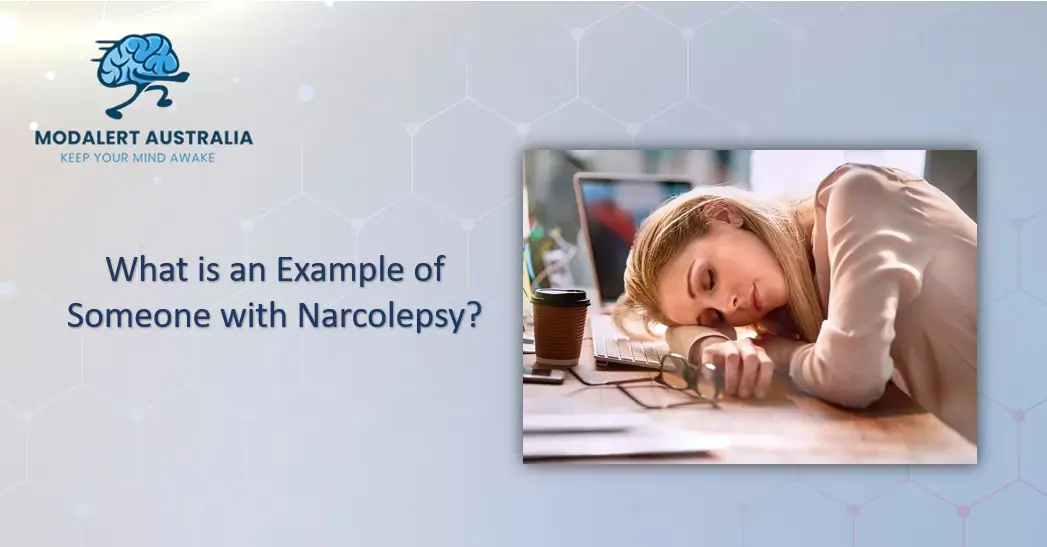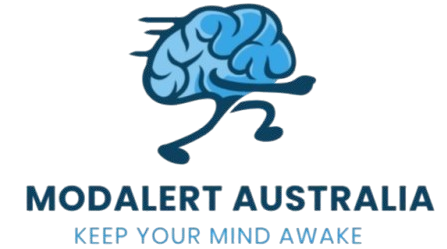What is an Example of Someone with Narcolepsy?

Introduction: Understanding Narcolepsy beyond the Stereotypes
Narcolepsy doesn’t only mean being able to fall asleep at random. It’s a neurological disorder that affects brain function and causes it to be unable to regulate the sleep-wake cycle. Some assume it’s excessive fatigue, but the truth is far more complex. Many people fall over from abrupt muscle weakness after they smile. Some people experience vivid hallucinations while they fall asleep.
The chronic neurological condition is characterized by Excessive Daytime Sleepiness (EDS), unexpected sleep disorders, and disturbances of the sleep-wake cycle. The disorder affects about 1 out of 2000 people. However, the majority of cases remain undiagnosed. To better understand the disorder more deeply, this article examines the experiences of Sarah Thompson, a 32-year-old woman suffering from Narcolepsy. Through her story, we’ll look at the signs, symptoms, diagnosis, treatments, and daily struggles this condition brings.
The real-world examples help dispels the misconceptions. Instead of a vague description, taking a look at the way patients live with the condition makes it much easier to understand. This article will focus on the most famous cases, daily struggles, the most severe manifestations, and how the diagnosis can alter life.
Understanding Narcolepsy
The cause of Narcolepsy is the brain’s inability to regulate sleep-wake cycles correctly. There are two types of it:
- Type 1 Narcolepsy (with cataplexy): The cause is a shortage of the hormone hypocretin (orexin), a neurotransmitter that regulates awakeness.
- Type 2 Narcolepsy (without cataplexy): Similar to symptoms, however, without any weakness in the muscles caused by emotional stress.
Sarah suffers from Type 1 Narcolepsy, meaning that she is prone to sudden weakness of muscles (cataplexy) whenever she experiences extreme emotional reactions.
Sarah’s Early Symptoms and Misdiagnosis
Sarah began to notice symptoms when she was in high school. Her sleepiness would be a regular feature in classes despite having a good night’s sleep. The teachers accused her of laziness, as doctors identified her as depressed or with insomnia.
Key Early Symptoms:
- Excessive Daytime Sleepiness (EDS): Sarah could not remain awake throughout lectures, mealtimes and even during conversation.
- Sleep Attacks: Her body would fall asleep during her exercise, lasting seconds or minutes.
- Sleep Paralysis: When she woke, she often could not speak or move her body for some time.
- Hypnagogic Hallucinations: Dream-like, vivid visions when sleeping or getting up.
It wasn’t until her college years that she began to collapse laughing over an absurd joke (an indication of cataplexy) when she decided to seek a doctor.
Famous Faces: Well-Known People with Narcolepsy
Harriet Tubman – A Historical Case
After suffering a head injury when she was young, Harriet Tubman experienced episodes in which she’d suddenly fall asleep. The theory is that she was suffering from Narcolepsy and possibly cataplexy (sudden muscle weakening). Despite this, she guided many to liberation via the Underground Railroad, often fighting fatigue.
Jimmy Kimmel – Public Figure Speaking Openly
The late-night television host has discussed Narcolepsy during interviews. He said he would fall asleep in meetings and even when sitting. The medication helped, but He still suffers from an abrupt tiredness.
Winston Churchill (Rumored, Never Confirmed)
Many historians believe that Churchill’s severe sleep patterns and mood swings may be due to an episode of Narcolepsy. Churchill was known for taking short breaks throughout WWII to remain conscious, but whether it was a strategy or a necessity remains uncertain.
The examples above show that Narcolepsy does not prevent people from achieving outstanding achievements, but does add difficulties.
The Diagnosis Process
Sarah underwent several tests:
- Polysomnography (PSG): Sleep study at night to rule out other conditions, such as sleep apnea.
- Multiple Sleep Latency Test (MSLT): It measures how fast she can fall asleep during afternoon naps. Narcolepsy sufferers typically enter REM sleep within minutes.
- Hypocretin Level Test: The lumbar puncture confirmed lower hypocretin levels and confirmed the diagnosis of Type 1 Narcolepsy.
Emotional Impact of Diagnosis
Sarah was relieved to get answers to her questions. However, she was also overwhelmed by worry about managing a long-term disease. Sarah joined support groups and learned about the ways to treat the condition.
Everyday Struggles: A Day in the Life of Someone with Narcolepsy
Morning Routine – Fighting Exhaustion Before the Day Starts
Waking up feels like being drugged. However much sleep they are getting, patients who suffer from Narcolepsy usually wake up with the feeling that they’ve not slept even once. The caffeine in coffee can help to some extent, but not significantly.
Work or School – Constant Battles with Focus
- Meetings or lectures – The fight to keep awake is an ongoing struggle. Many people put their fingers on themselves, chew their gum or even stand up to prevent falling asleep.
- Memory lapses – If awake, their brain may be unable to process all information. Reminders and notes become crucial.
Social Life – Misunderstandings and Coping
They may joke with friends about often being exhausted. It’s just not fun to fall asleep during a conversation. Many people avoid large gatherings because they are afraid of crashing. Many rely on short napping inside their vehicles to get through the crowds.
Treatment and Management Strategies
There’s no treatment for Narcolepsy. However, treatments assist in managing the symptoms:
Medications:
- Stimulants (Modafinil, Armodafinil): Encourage a state of mind.
- Sodium Oxybate (Xyrem): Enhances sleep at night and decreases cataplexy.
- SSRIs (Fluoxetine): It helps to control hallucinations and cataplexy.
Lifestyle Adjustments:
- Scheduled Naps: Sarah has two 20-minute napping sessions daily to battle insomnia.
- Sleep Hygiene: A strict bedtime routine is essential to increase sleeping quality at night.
- Diet & Exercise: Beware of heavy meals and excessive caffeine at night; moderate exercise can boost energy levels.
Psychological Support:
Therapy aids Sarah in overcoming depression and anxiety that are linked to her health condition.
Extreme Cases: When Narcolepsy Takes a Dramatic Toll
Cataplexy – Sudden Collapse from Emotions
Imagine giggling at a joke with your legs shivering. That’s cataplexy. Some people drop objects while others collapse completely. One person described falling head-first onto her food plate after somebody told her a hilarious account.
Sleep Paralysis and Hallucinations – Waking Nightmares
- Sleep paralysis – Awakes unable to move, and sometimes suffers from an intense feeling of pain in the chest.
- Hallucinations – The appearance of shadowy figures or hearing voices at night when you’re asleep. A man believed the intruder had entered his bedroom, but it was a dream.
Driving Dangers – The Risk of Falling Asleep at the Wheel
Certain people suffering from Narcolepsy stay away from driving altogether. Other people have strict guidelines for driving that prohibit long drives, avoid driving at night, and always bring a companion to keep awake. One truck driver quit his job due to microsleeps, making the job too risky.
Daily Challenges and Coping Mechanisms
Work Life
Sarah is employed as an artist, which is a job with flexibility that permits breaks. But, at first, she was subject to discrimination because employers did not understand her disability. As per the Americans with Disabilities Act (ADA), the woman now gets accommodation.
Social Life
Cataplexy is a risky condition for people with strong emotions. Sarah clarifies situations that can trigger intense emotions, such as anger or laughter. Family members and friends have been trained to spot cataplexy symptoms.
Driving and Safety
Sarah has to show medical approval for driving in her state. Sarah is cautious about long trips and takes public transportation if she is drowsy.
Lesser-Known Symptoms: Surprising Ways Narcolepsy Manifests
Automatic Behaviors – Acting Without Realizing
Some people work in a state of sleep. Students may write incoherent notes in their notebooks. Cashiers might look up objects without recollecting.
Fragmented Nighttime Sleep – Waking Up Constantly
Even when they’re tired, People suffering from Narcolepsy frequently get up several times throughout the night. Getting a deep sleep is rare, and they are often unrested.
Mood and Mental Health – Higher Risk of Depression
Constant exhaustion wears people down. A lot of people with Narcolepsy suffer from depression or anxiety. A lack of control over their body can be a source of frustration.
Research and Future Hope
Scientists are examining:
- Hypocretin Replacement Therapy: The Possibility to re-establish brain chemicals.
- Immune System Modulators: Because Narcolepsy could be an autoimmune condition, treatment options targeting immune reactions are under trial.
- Gene Therapy: Examining genetic causes of the development of Narcolepsy.
Sarah is a participant in clinical trials and hopes for improvements.
How Diagnosis Changed Their Lives: Patient Stories
Years of Being Misunderstood
One lady was criticized as lazy for sleeping in class. The doctors told her that she was suffering from stress. It took her 10 years to be diagnosed with Narcolepsy.
Life After Treatment – Small but Crucial Improvements
- Medication – The stimulants can help you sleep better during the day. Antidepressants may reduce cataplexy.
- Lifestyle changes – Sleeping on a schedule, following strict schedules, and abstaining from large meals can aid.
Support Systems – Family, Doctors, and Communities
Groups on the internet allow people to share information and tips. One person said that meeting people who could relate was life-changing.
Breaking the Stigma: Why Representation Matters
Films and television often portray Narcolepsy incorrectly. It’s more than a comical problem; it’s a serious condition. When people who have lived it share their personal experiences, it aids people in understanding.
Final Thoughts: Seeing the Person, Not Just the Condition
Narcolepsy can be more than just occasional sleep disturbances. It’s an ongoing battle with weak muscles, exhaustion, and anxiety about embarrassing yourself. With the proper treatments and assistance, individuals can have the ability to manage. If you notice these signs on your own, speak to an expert. If you are familiar with someone suffering from Narcolepsy, be patient. They’re fighting a battle that isn’t visible.
Conclusion
Sarah’s story of Narcolepsy shows the difficulties of coping with an invisible impairment. While there is still a lot to be overcome, advances in medicine and solid support systems allow Sarah to live a whole and satisfying life. Her experience highlights the need to increase understanding, earlier diagnosis, as well as compassionate care for patients suffering from Narcolepsy.





